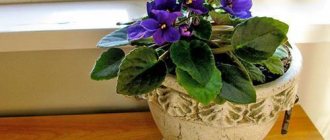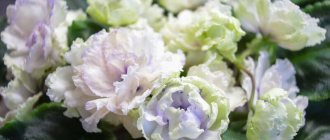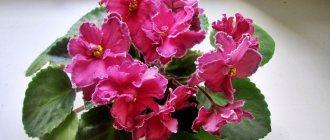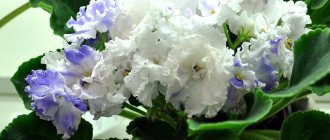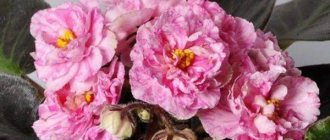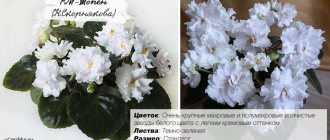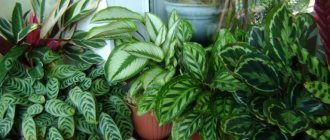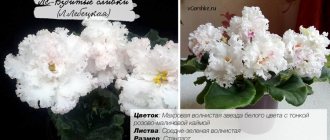The history of one of the most popular indoor plants began in 1892, when Walter von Saint-Paul took a routine walk through the picturesque surroundings of the district entrusted to him by the German government in East Africa.
Being the son of a prominent dendrologist, the commandant himself had a genuine interest in the unusual flora of the exotic region. Small pubescent rosettes with dense oval leaves and single purple flowers growing between the stones attracted the baron’s attention.
Therefore, having collected small seeds of an unknown crop, he sent them home. The very next year, the first shoots were obtained, the plant was described and named in honor of the discoverer.
Today, photos of Uzambara violets or Saintpaulias are easily recognized by all lovers of indoor floriculture. It is difficult to imagine that a plant, first presented at an exhibition just over a hundred years ago, was already recognized as the most popular in the United States in 1927, although by that time the cultivated varieties of violets could be counted on one hand.
Thanks to tireless breeding work, to date more than thirty thousand varieties of violets have been obtained, whose names and photos excite the imagination of lovers of this culture.
Violet Blue mist
The shining, light flowers of the Blue Mist violet, bred by K. Morev, have a star-shaped shape, sky-blue color and an amazing wavy edge, giving Saintpaulia airiness and freshness. The corollas are very large, densely double. The petals are decorated with a wide white border. Standard size socket. The foliage is light green, ovoid in shape with a wavy edge and a notch in the center of the leaf blade. The bloom of the Blue Mist violet is widespread, and the plant will become the center of any collection.
Violet Duchess
In the photo there is a Duchess violet from S. Repkina. This variety of Saintpaulia is well known to flower growers in the CIS countries, because, like other “brainchildren” of this breeder, it invariably pleases with its beautiful flowering and easy-going disposition. The flowers of the Duchess violet are huge, semi- or double, with a wavy patterned edge. The flowers are decorated with plum-colored spots in the center of the petals. The variety stands out for its powerful rosette and beautiful dark green foliage with noticeable veins, giving the leaf blades a quilted appearance.
The Duchess Lux violet, obtained from a parent plant that is similar in appearance, also has noticeable differences. Moreover, both varieties have beautiful large flowers, pleasing with the number of petals and shape. In Duchess Lux, a green fringed border is clearly visible along the edge of the petals. The leaves of this variety are lighter in color and have beautiful wavy edges.
Types and varieties of violets with photos, names, descriptions
The violet became the ancestor for many varieties. Their distinctive feature is the shape and shades of colors. Semi-double and double varieties were bred. The colors are mixed. Now you can see violets with spots, streaks, contrasting borders, patterns, stripes and inclusions.
Semi-double violet
Semi-double violet
The petals are covered with very small shiny balls. Sometimes there are species covered with soft down. Such violets are called velvet. The edge of the petal is strongly corrugated or slightly wavy.
Terry violet
Flowers form voluminous racemose inflorescences. The diameter of the flowers ranges from 2.5 to 9 centimeters. The color of the petals can be white, blue, violet, purple and other shades.
Varieties of indoor violets are divided into 3 groups:
- variegated;
- collectible;
- industrial.
Variegated violets have brightly colored leaves. They are painted in different colors. The border most often stands out well. Breeders have developed species with large double flowers of different colors.
Collectible violets are characterized by voluminous inflorescences reaching 7 centimeters in size. They have large terry wavy petals. The color varies, from snow-white to deep blue shades. Leaves with wavy edges have different colors.
Industrial violets are intended for mass cultivation. They are not demanding in care.
Depending on the arrangement of the petals and the size of the flower, violets are divided into 5 types:
- star;
- pansies;
- bowl;
- bell;
- wasp.
Violet Star
This type of violet has the same size petals. They are evenly spaced around the core.
Goddess of beauty
Variety Goddess of Beauty
The inflorescences form double bright pink stars with a purple-violet tint. Large basal bush. The leaves are dark green in color.
Marshmallow
Variety Zephyr
Large, creamy white, semi-double or double buds with coral or pink strokes on the surface. The edges are wavy. Peduncles are large and erect. The leaves are light and green. The socket is large, but at the same time compact. The plant grows quickly. At elevated temperatures it can bloom with simple white flowers. When watering, water should not fall on the leaves.
Pauline Viardot
Variety Pauline Viardot
The flowers are large, single or semi-double, colored in a wine shade. The edge is edged with a thin white ruffle. The flowers are arranged vertically. The variegated rosette is compact and bright.
Black Pearl
Variety Black Pearl
Flowers are large, densely double. The velvet color surprises with the tints of purple and violet tones. The socket is standard. The leaves are oval shaped and dark green. The petioles are long and strong.
Bullfight
Variety Bullfight
The flowers are very large, with a diameter of 8 centimeters. The shape of the flowers is semi-double or double. The color is deep burgundy. The leaves are light green, pointed at the ends.
Beautiful Creole
Variety Beautiful Creole
This is a prolific and unpretentious persistent variety with velvety flowers. Violet blooms often and for a long time. The compact small rosette contains many simple dark blue, velvety flowers. The buds are large, 5 centimeters in diameter. The edges have a white border, which sometimes turns light green. The stem is burgundy, strong.
Cinderella's Dream
Variety Cinderella Dream
Flowers are semi-double, large, lacy, light purple with a crimson tint. The petals are covered with a purple-violet pattern. The upper petals are darker and small in size. The edges are fringed and greenish. The border is corrugated, the edge of the petal is purple. The socket is flat. The leaves are wavy, dark, evenly colored.
Viscount
Variety Viscount
Flowers are blue, wavy, large in size, double or semi-double. The edges have a wide corrugated white border. The leaves are quilted, dark green. The socket is simple.
Magenta
Variety Magenta
The flowers are semi-double or double, quite large. The color is rich, red-burgundy. The edges have an intermittent white wavy border. The socket is small. The leaves are pointed at the ends and light green in color.
Black Prince
Variety Black Prince
Large black and red double flowers. The foliage is dark green. The reverse side is red. The size of the bush is standard.
Blue fog
Variety Blue Fog
This is a standard variety with double, fairly large blue inflorescences. The edges of the buds are decorated with a white border. The stem is shortened. The leaf rosette is medium. The leaves are long-petiolate, dark green, rounded. The edges are wavy.
Winter smiles
Variety Winter Smiles
An unpretentious, semi-double variety that blooms luxuriantly and profusely. Pink flowers. The edges are crimson with light green or yellowish-green fringe. The petals reach 6 centimeters. Fringe turns white at high air temperatures. It becomes more noticeable when growing the plant in a cool room. The leaves are green in color with an olive tint, slightly elongated, embossed, quilted. The rosette is flat, medium in size, grows up to 35-40 centimeters.
Violet Pansy
This species has a bud of 5 petals. The top two petals are smaller than the three bottom petals.
Spring outbreak
Variety Spring Flash
Early variety, blooms for a long time. The flowers are velvety. The petals inside the flower are bright yellow, the outside ones are burgundy-brown. Some flowers are completely burgundy or yellow. The variety is suitable for hanging cultivation.
Heavenly Queen
Variety Heavenly Queen
Bright blue flowers become lilac over time. The edge of the petal is pink.
Violet Bowl
Variety Bowl
These violets have petals that are not fused at the base. The bud does not open completely, maintaining its shape throughout the entire flowering period.
Violet Boo Man
Variety Boo Man
Flowers can be double or semi-double. The color is sky blue. The upper petals are white. The diameter is small, reaching 3 centimeters. The leaves are oval, rich green.
Ming Dynasty
Ming Dynasty variety
The variety is distinguished by its cup-shaped shape. The petals are white. The edges are slightly corrugated and pale pink. The leaves are bright green in color, variegated, with wavy edges.
Violet Bluebell
The Bluebell violet has petals fused at the base. The flower looks like a bell and cannot fully open.
Shining bell
Variety Shining bell
This variety produces flowers in the shape of blue bells. The edges are wavy. They show rare touches of fantasy. The eye is bright yellow. Leaves are green in color. The socket is of the correct shape.
Sea wolf
Variety Sea Wolf
This is a semi-double variety. The flowers are blue, large, reaching 8 centimeters in diameter. The edges are wavy. The petals are wavy, with a mesh pattern, which is clearly visible after the bud has completely dissolved. The leaves are drooping, dark green, fleshy, large.
Chanson
Variety Chanson
This is an unpretentious, profusely and long-blooming double variety with bell-like flowers. The flower consists of a huge number of violet-purple or dark blue velvety petals, playing in the light with various shades. Wavy petals are slightly shaded with light or dark pink spots. The leaves are shiny, smooth, dark green. The rosette is symmetrical and large.
Violet Wasp
This type of violet has completely separated petals. Two are rolled into a tube, and three elongated ones hang down.
Saintpaulia Blue Teal Fly
Variety Blue Tail Fly
Flowers are bright blue. The upper petals are tubular in shape, the lower ones are elongated. The leaves are fleecy, rolled into little balls.
Zemfira
Variety Zemfira
Tubular flowers, simple or semi-double, lilac in color. The edges are corrugated. Middle socket. The leaves are green, variegated in the center.
Varieties of violets that cannot be classified are divided into types: Chimera, Mini, Retro, Variegated, Ampelous, white, pink, purple.
Chimeras
This violet is a subspecies. She combined several varieties of Saintpaulia. The petals of this violet have 2 genetic layers with different colors. The background is colored with the main cells, and the upper layer of cells is depicted as a spot, a clear stripe. The plant combines 3 types of flowers with different genetic characteristics. Violet is endowed with a wide range of colors. Its color is divided into 2 main types:
- straight;
- back.
In the first case, the petals are lighter than the stripe in the center. In the second case, the base is darker than the stripe or spot in the center.
There are also chimeras that do not fit the description of these types, these are leaf violets. Their flowers can be one color, and the foliage is painted with intricate patterns.
Dance of the Galaxies
Variety Dance of Galaxies Star
flowers are large, bright purple. The edges of the petals are darkened and have a thin white border. The petals are decorated with frequent polka dots of white fantasy. The leaves are quilted, dark green. The reverse side is red. The socket is standard.
Firebird
Variety Firebird
Semi-double light blue corollas have bright large strokes of yellow. The petals are corrugated and uneven. The rosette consists of wavy green leaves.
Yesenia
Variety Yesenia
Flowers are semi-double, large, white in color. Violet tint prints are visible on the petals. The edge is framed with a white-greenish lace border. The socket is small. Leaves are emerald green.
Stassia
Variety Stassia
The variety blooms profusely. On large semi-double flowers, smoky cherry strokes are clearly visible. The edge is wavy, slightly outlined, green. The socket is compact.
Raisin
Variety Raisin
Flowers of lavender color with white specks on slightly ruffled petals. The inclusions sometimes fill most of the petals. There is a wide border of white color along the edge. A crimson stripe is visible at the border of the border. The eye is white. The compact rosette consists of medium green, small leaves.
Pavlina
Peacock variety
White large flowers, single or semi-double. The petals are wavy, with blue patterns and prints and coral color. The rosette is smooth, with green foliage. Abundant flowering occurs under artificial light.
Isadora
Variety Isadora
Snow-white flowers are very large, semi-double. There are pink spots scattered on them in abundance. The leaves are voluminous, dark green. Peduncles quite often bend under the weight of the buds.
Jan minuet
Variety Jan Minuet
Large double flowers. They resemble stars. Their diameter is 7 centimeters. The color is soft pink, thickly sprinkled with a thicker shade. The border is crimson, corrugated, the width varies. The flowers show bright transitions of colors. The petals are wavy and large. The peduncle is strong and tall. A round bouquet of 3 pom-pom-like flowers is formed on one peduncle. The foliage is slightly wavy, dark green, with serrated edges. The socket is standard, small.
Ice Rose
Variety Ice Rose
This variety attracts attention with the bright color of its petals. The flowers look like noble roses. With each new flowering, the shade and structure of the flowers changes. Over time, the inner part of the white petals becomes cherry or lilac, and the edge of the petals becomes light green. The white petals have lilac or raspberry-pink strokes. The edges are corrugated, light green or pale yellow in color. During the flowering period, 6-7 flowers are formed. The foliage is large, dark green. The edge is slightly wavy. The socket is large.
Rosemary
Variety Rosemary
This is a long-blooming, prolific variety of standard sizes. Flowers are large, double. The background of the petals is white. It is visible along the edges and at the base of the petals. On top of the background is a soft pink color and blue or purple splashes. The amount of spray on the petals may vary. Due to the abundance of petals, the violet looks like a pompom. The edge of the petals is curved and wavy. The rosette consists of jagged dark green leaves.
Mini
The rosette of these violets is small, no more than 20-25 centimeters in size. Today, about 2 thousand varieties of these miniature violets are known. They are less demanding than other larger varieties.
Aquamarine
Variety Aquamarine
The variety blooms profusely and for a long time. Flowers are round, double. The petals are white with blue streaks. The outside of the inflorescence is green. The leaves are green. The rosette is compact, 20-25 centimeters in diameter.
Oksana
Variety Oksana
A variety of violets with semi-double large lavender flowers. The tips of the upper petals have a dark border. The leaves are dark and green. The variety belongs to semi-mini violets.
Maria
Variety Maria
A variety with large, densely double corollas with bright pink flowers. The flower resembles a miniature rose. A purple pattern covers each petal. The edges of the flowers look like ruffled frills. The rosette is rich green.
Retro
This is a spreading, dense, fast-growing and unpretentious violet. The plant blooms often and for a long time.
Purple flowers combine whimsically with light green and white. The petals are covered with an unusual vein-like pattern. The veins are clearly visible on the stem, of which there are up to 8 pieces.
Angelica
Variety Angelica
This mini-variety has large double light pink or dark cherry flowers with a coral core. The main highlight of the variety is the double edge of the petals. The leaves are rich green. Closer to the center of the flower there is a stripe of lilac splashes. The edge is corrugated, painted pure white.
Amadeus
Variety Amadeus
The variety has large red-crimson velvety double or semi-double flowers. Petals are oblong. They reach 5.5-6 centimeters in diameter. The edges are corrugated. The border is thin and white. There is a white tint visible in the middle of the flower. Flowers are collected in compact inflorescences. As the flowers bloom, the color of the petals becomes brighter. The leaf rosette is large, reaching 40 centimeters in diameter. The leaves are simple in shape, large, light, almost olive, with long petioles.
Olesya
Variety Olesya
Semi-double flowers, velvety, large. The color is deep, pink-burgundy. The socket is small. The leaves are medium-sized, dark green.
frosty cherry
Variety Frosty Cherry
The double flowers of this variety are large and very beautiful. The diameter of the flower reaches 4 centimeters. They don’t become like this right away, but gradually. During the first flowering, the flower size is much smaller. In subsequent ones, the size increases each time. The main color of the petals is red-cherry. The border is wide and white. In the center of each petal there is a large fuchsia-colored spot.
Esmeralda
Variety Esmeralda
The variety has large velvety leaves. The flower is burgundy-raspberry, double or semi-double. The edges are slightly darkened, the ruffled border is white and green. The edging of a blooming flower is green. When kept at a cool temperature, the color is preserved, but in a warm room it gradually turns white. The violet blooms with a luxurious cap.
Chateau Brion
Variety Chateau Brion
Peduncles erect, powerful. The flowers look like pompoms, large, double, and wine-colored. The edge of the petals is decorated with a wide corrugated white border. The socket is standard. The leaves are slightly wavy, elongated-ovate in shape.
Violets - home care
Variegated
There are 3 types of variegation. The most beautiful is the type with bordering variegated leaves. In such plants, light areas are located evenly along the contour of the foliage.
The color of variegated leaves can be white, cream, white-pink, brown, grayish-pink, less often yellow, dark pink. The intensity of the variegated color depends on the conditions of the plant and the air temperature. In a cool and well-lit room, the flower becomes more vibrant. With a lack of light, the leaves become greener, and in some cases the variegation disappears completely (during flowering). Coloring is inherited rather poorly.
With crown variegation, the center of the rosettes is colored golden, pink and white. This species is more stable and is inherited.
Rows of green foliage alternate with colored ones. During the flowering period, in most varieties the center of the rosettes turns green.
A more stable type is mosaic variegation. The foliage of such violets is partially or completely covered with an irregular, intricate pattern, similar to a pattern on marble or a mosaic of cream, pink, streaks and spots. This type of violet is quite rare.
Another type is known, this is spontaneous variegation. These plants do not transmit variegation from the parent varieties.
Summer twilight
Variety Summer Twilight
The flower has the correct proportions. Flowering is quite abundant. The inflorescences are large, semi-double, contrasting. The background color of the petals is lilac-violet. The edges are trimmed with white ruffle. The leaves are variegated, slightly concave. The edges are slightly wavy. The rosette is smooth, spherical in shape.
Blue Dragon
Variety Blue Dragon
The flowers are large, pale blue. The edge of the petal has a white-green border. The socket is powerful and flat. The leaves are dark green in color, with a crimson or purple tint on the underside. The variety is grown on a well-lit windowsill or loggia.
South night
Variety Southern Night
The variety has dark blue simple star-shaped flowers with bright crimson fantasy peas and a thin white border. The foliage is dark green with pink splashes. The socket is smooth, standard sizes.
Chic poppy
Variety Chic poppy
This is a variegated plant with large, double flowers that have a wavy, fringed edge. The flowers reach 6 centimeters in diameter. The edges of the petals are dimpled, similar to ruffles. The colors of the petals vary, from light pink to orange-red tones. The leaves are pubescent, spade-shaped, decorative. Light greens from the center become discolored and turn into white tones, making them variegated. Sometimes the leaves become completely white.
How to grow violets at home
Ampelous
Ampelous violets are intended for growing in flowerpots and hanging pots. They decorate balconies, loggias, and hanging flower beds. Plants have several growth points. A large number of new shoots are formed on the sides. Long stems point downwards. They need good lighting. They bloom throughout the year. In winter, the plant needs additional lighting.
Lituanica
Variety Lituanica
An ampelous variety with large, densely double inflorescences. The petals are slightly elongated, similar in shape to small dahlias. The color of the flowers is pink-peach. The edge of the petal is painted in a more intense color. The leaves are densely pubescent, dark green, pointed at the end. The stem is elongated. The rosette is tall, well leafy, growing to impressive sizes.
Grinya
Grinya variety
This is a slow growing hybrid. The flowers are large, semi- and densely double. At the bud stage, the flower is completely green. As it blooms, it enlarges and turns white. A wide green border remains along the edge of the corrugated petals. It disappears over time, after which the flower becomes snow-white. The rosette is sparse and develops evenly. The leaves are wavy, rich green, hanging from the pot. Flowering lasts a long time.
Violets on the windowsill ruin your privacy
White
The white violet has densely double large flowers. The rosette is compact and consists of dark green leaves.
The bride's bouquet
Variety Bride's Bouquet
This profusely blooming variety has large star-shaped flowers of a soft white color. The edges are wavy. Flowers look like a wedding bouquet.
Whipped cream
Variety Whipped cream
The flowers of this plant are white, large in size, terry, lacy. The edge of the petal has a thin pink-crimson ruffled border. The rosette is light and small. The foliage is slightly wavy.
Bridal bouquet
Variety Wedding bouquet
Flowers are snow-white, very large, single or semi-double. The center is bluish. Green corrugated border. The leaves are simple, light green in color. Standard size socket.
Pink
Georgia
Variety Georgia
This is a profusely flowering, very noticeable variety. The flowers are bright pink, double, large in size. The edges are strewn with lilac specks. They are wavy and have a thin light green border. Flowers are formed on powerful, large peduncles. For abundant flowering, the variety requires proper conditions.
Rose of Wind
Variety Wind Rose
This is a delicate and very beautiful violet. The flowers are medium-sized, about 4 centimeters in diameter, double, similar to lush garden roses. Petals are white and pink. The edges are broken, corrugated, light or dark pink. In some places a green border is visible. The buds are located on a thin stem. The foliage is spreading, light green, forming a rosette. Several double flowers are formed on one peduncle.
Viola - growing from seeds
Purple
Don Juan
Variety Don Juan
This is a variety with large purple-plum single or semi-double flowers. The border is wide, strongly corrugated, bronze-green in color. The foliage is dark green with pink edges, slightly wavy.
Macho
Variety Macho
This is a semi-double chameleon variety. The flowers are burgundy-violet, almost black. The buds are densely located. A bright white border is visible along the edge of the petals. In natural light the flower becomes purple, almost black, and when illuminated it turns burgundy. The leaves are green, large, raised, ovoid. There are many flower stalks, they develop and grow unevenly.
Duchess
Variety Duchess
The variety pleases with its beautiful flowering. The flowers are huge, semi-double or double, with wavy edges. The flowers are decorated with plum prints located in the center of the petals. The socket is powerful. The foliage is dark green, quilted, with noticeable veining.
Water
Variety Water
Variety with large violet-blue flowers. Along the edges they have lighter fragments and abundant green ruffle. The back side of the corolla is lighter. The peduncles are low, strong, and hold 4-6 spherical flowers. The leaf is green, quilted, with wavy edges. The socket is average. The flowers open gradually and last for more than a month in cool weather. The beauty of the variety is fully revealed in the second flowering.
Varieties of violets: video
There are quite a lot of varieties and varieties of indoor violets and every gardener can choose them according to his taste. Proper care allows you to preserve the peculiarity of a particular variety, preserving its uniqueness and beauty.
Violet Winter smiles
The elegant variety of violet Winter Smiles belongs to the most famous and oldest breeder of Russia B. Makuni. Compact plants generously reward the lover of this culture with semi-double or double flowers with a diameter of up to 5.5 cm. The color of the petals is complex and harmonious. A light pink background, on which crimson tint strokes stand out. The fringed edge, reminiscent of frost sparkling at dawn, has a delicate yellow-green tone. When keeping plants in a hot room, the border becomes lighter to white. The flat rosette of Uzambara violet, as in the photo, consists of green rounded leaves, sometimes with an olive tint. The edges of the foliage are jagged, the leaf blade is embossed and quilted.
Nuances when planting and growing, possible diseases
For the growth and good flowering of this plant, certain conditions must be met.:
- The soil mixture for growing should be loose. Its composition: turf soil (3 parts), peat (5 parts) and sand (1 part). This soil mixture can be found in specialized stores.
- The soil should also be nutritious and moisture-absorbing with a slightly acidic pH of 5.5 - 6.5. You can improve store-bought soil by adding perlite. The addition of mineral chips improves the soil structure, making it lighter.
The main requirement for growing violets is the ability of the soil to pass air. The root system of a plant needs a constant supply of oxygen to live.- After about two months, it is time to fertilize, since the nutrient reserves of the soil are drying up by that time. Fertilizers vary in purpose. Nitrogen fertilizers are used to grow rosettes, while potassium fertilizers ensure the health of flower stalks. Concentrated complex mineral fertilizers can fully provide flowers with nutrition, because the elements in them are in an easy-to-digest form.
- You need to decide on the choice of container for the flower, its size and material.
Suitable containers made of plastic and ceramics. A plastic pot is lightweight and durable, but it is not breathable. In a large container, the plant develops a root system without tending to flowering. For the abundant appearance of flower stalks, a small pot is required. There should be holes at the bottom of the pot to drain excess water. - For a comfortable existence, violets require a large amount of light, but not direct sunlight. Direct exposure to the sun results in yellow spots on the leaves. Pots with these flowers are placed on the east or southeast side; shelving is often used (in this case, the plant is illuminated with fluorescent lamps). The distance from the flower to the lamp should be 25 cm from the flower.
- A mature plant needs to be transplanted to a new location. Initially, containers with a diameter of about 4 - 5 cm are used, but when the violet grows, it becomes cramped. After six months, a container measuring 9 cm is needed. Young plants require replanting 2 times a year, in spring and autumn. Then the pot is changed once a year. If Saintpaulia is not replanted, salts accumulate in the soil, preventing the roots from feeding. During the transplantation process, diseased and dried leaves are removed.
- Three years after planting, violets lose their decorative qualities and the plant becomes more vulnerable to disease. By cutting and rooting the top part of the plant, it can be rejuvenated. The cut sites are treated with a special preparation.
Indoor violet can suffer from diseases and parasites . Among the enemies of violets:
- spider mite (the drugs Fitoverm and Actellik are used against it);
- whitefly (insecticides are used);
- mealybug (laundry soap);
- powdery mildew (fungicide);
- fusarium (treat the soil with a solution of copper sulfate).
We present to your attention an overview of the most popular and attractive varieties of violets: the striking “Chanson”, graceful “Cherry”, lushly blooming “Bronze Horseman” and “Isadora”, lovely “Fairy”, mysterious “Pansy”, lily-of-the-valley “Greenhouse effect” and exquisite varieties of the Optimara series.
